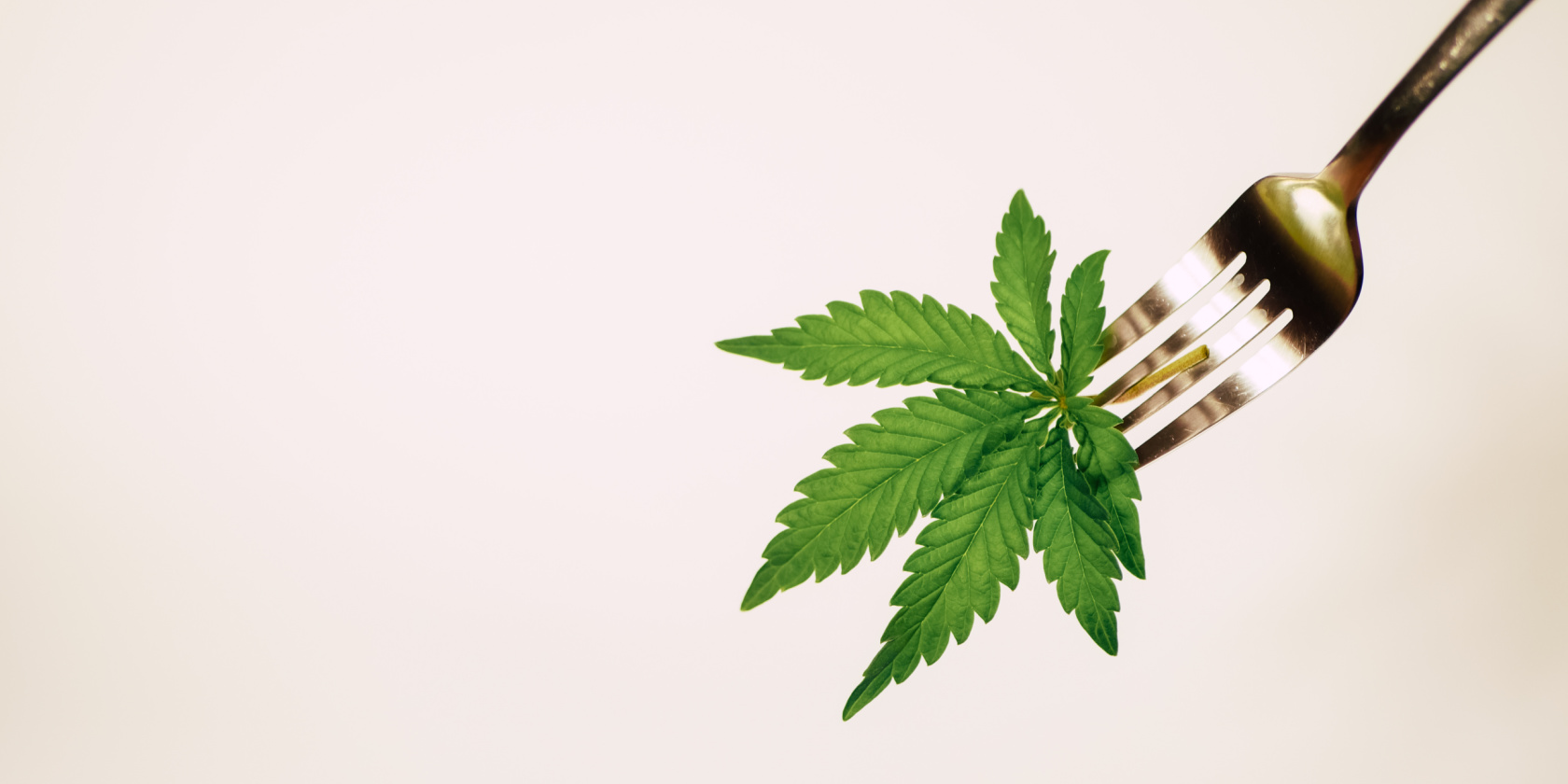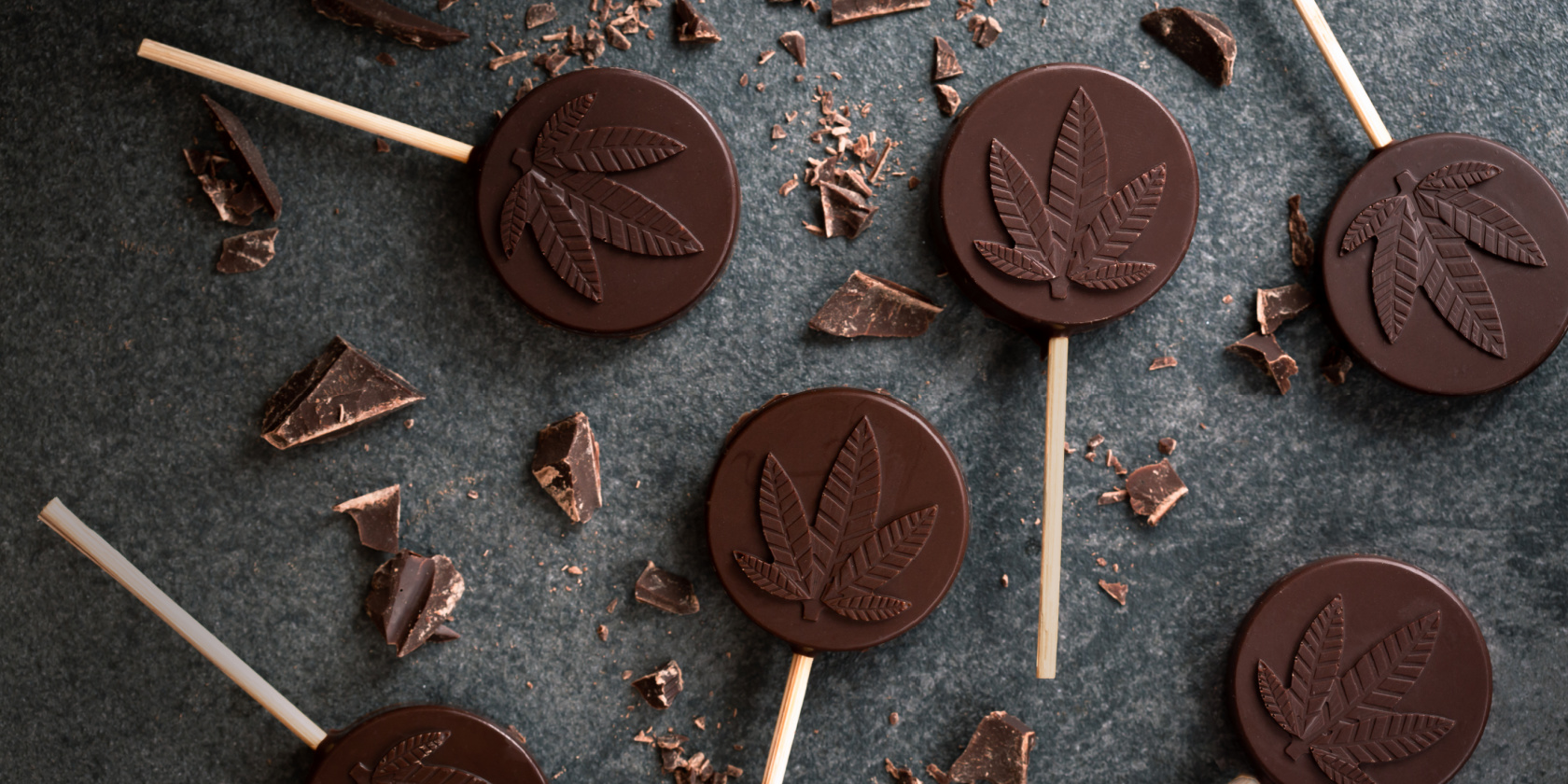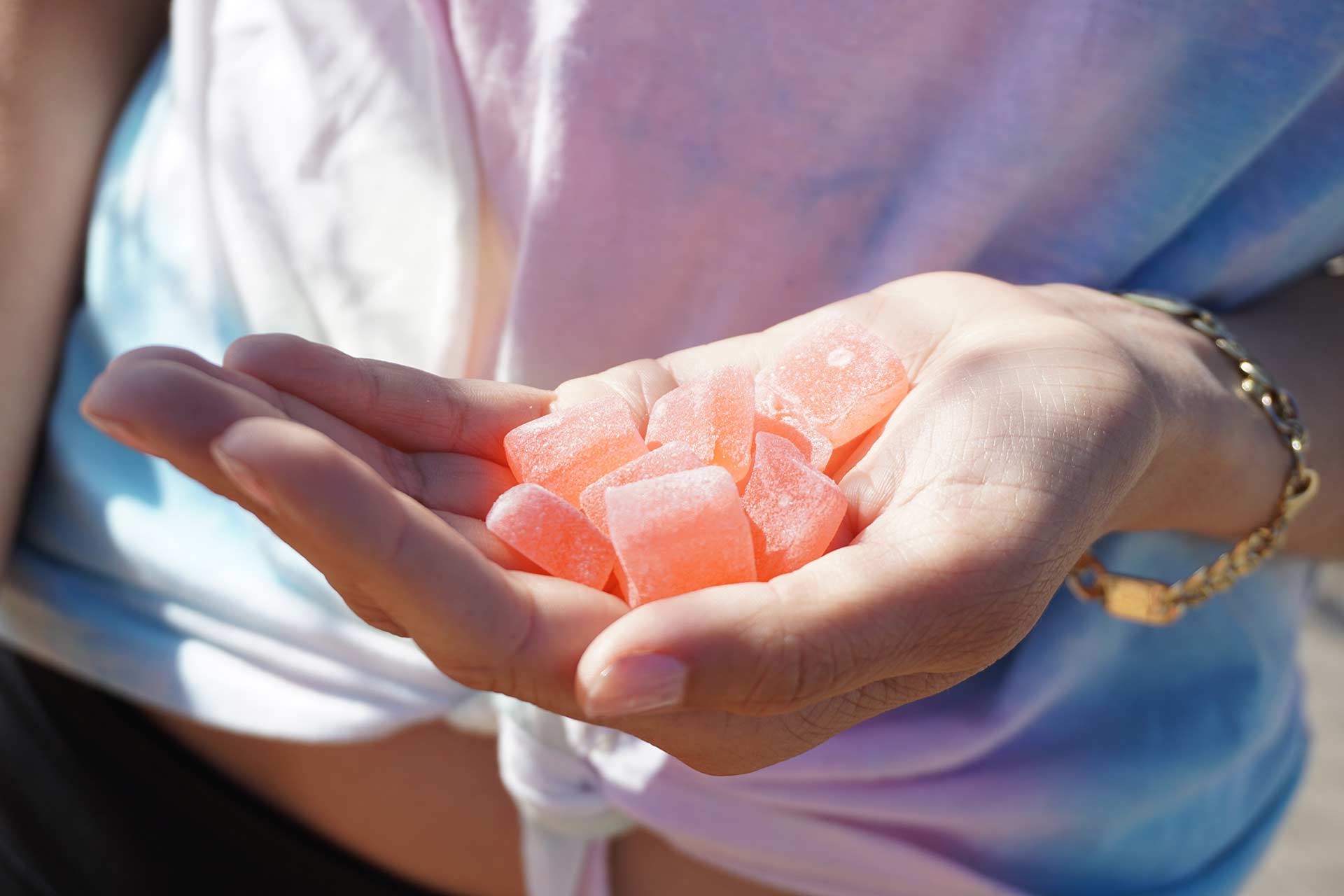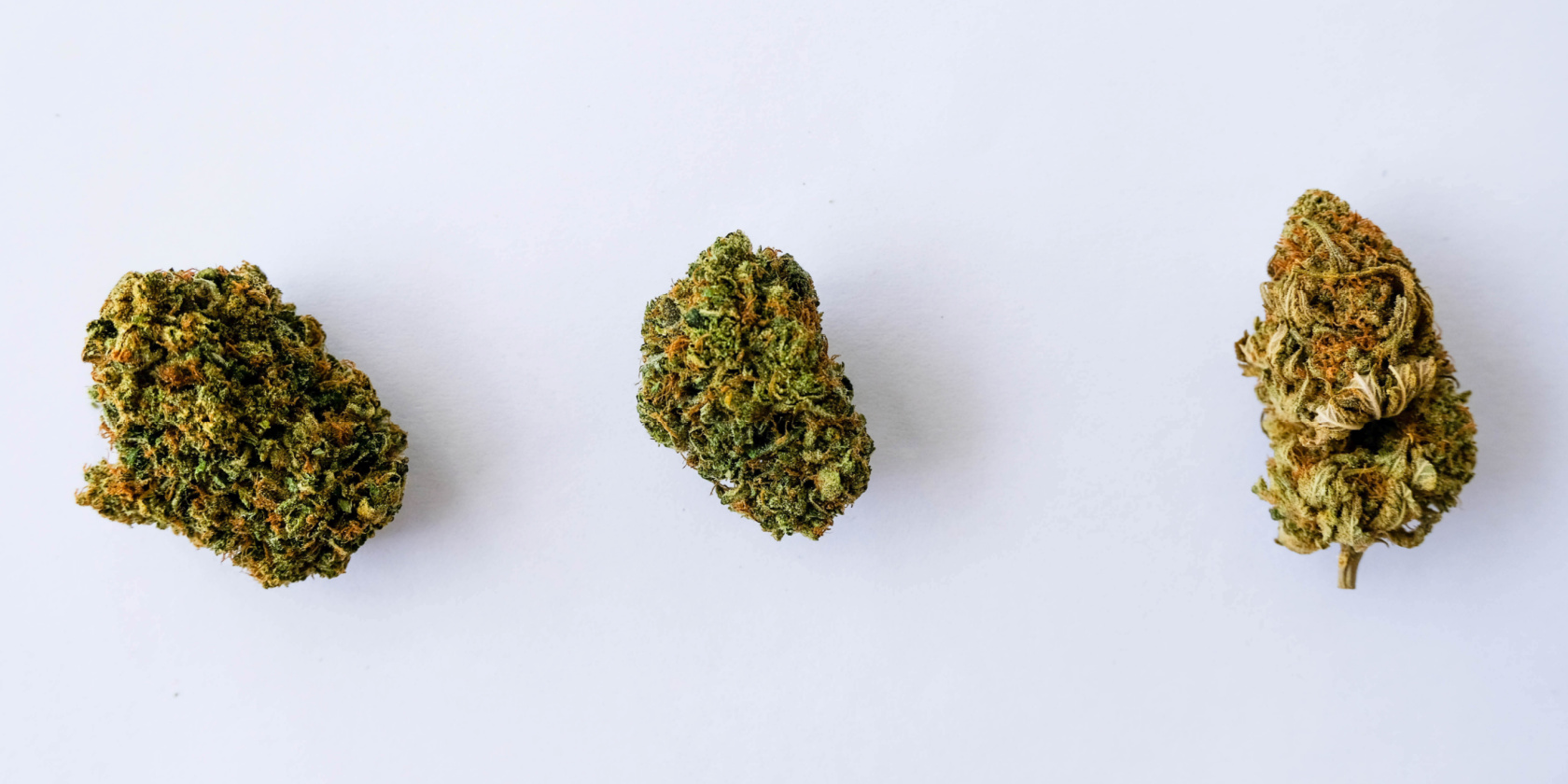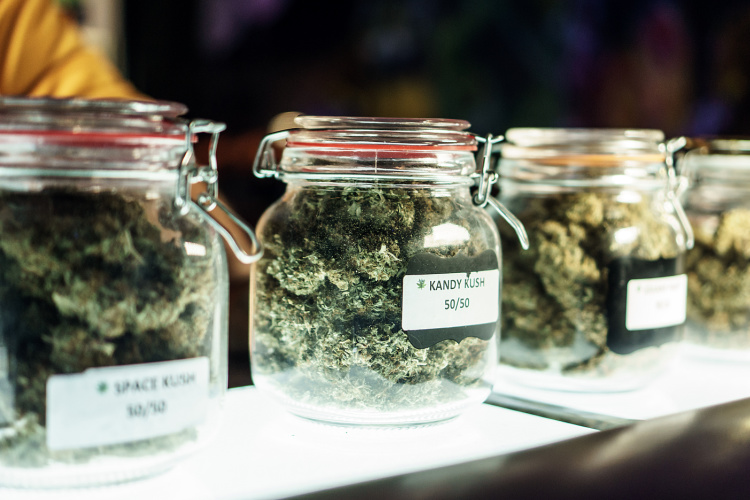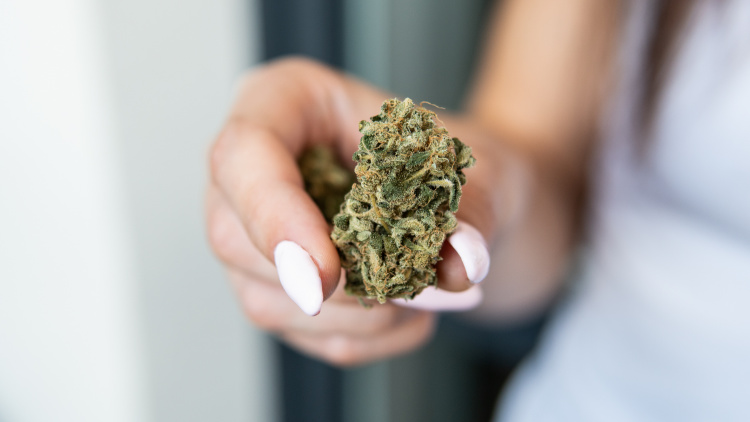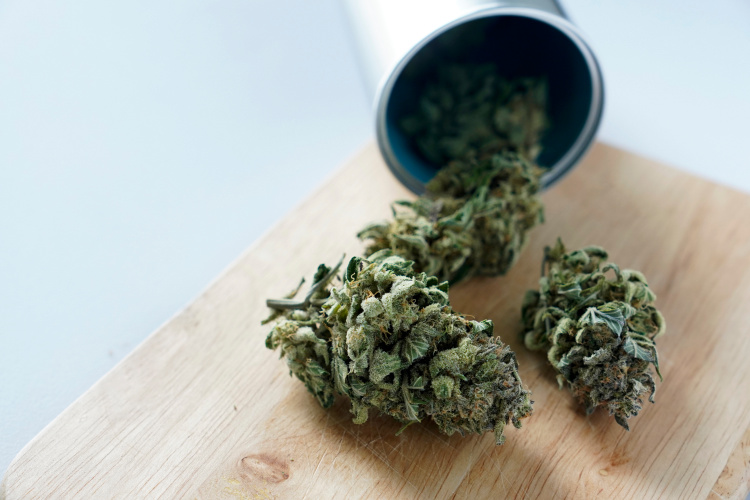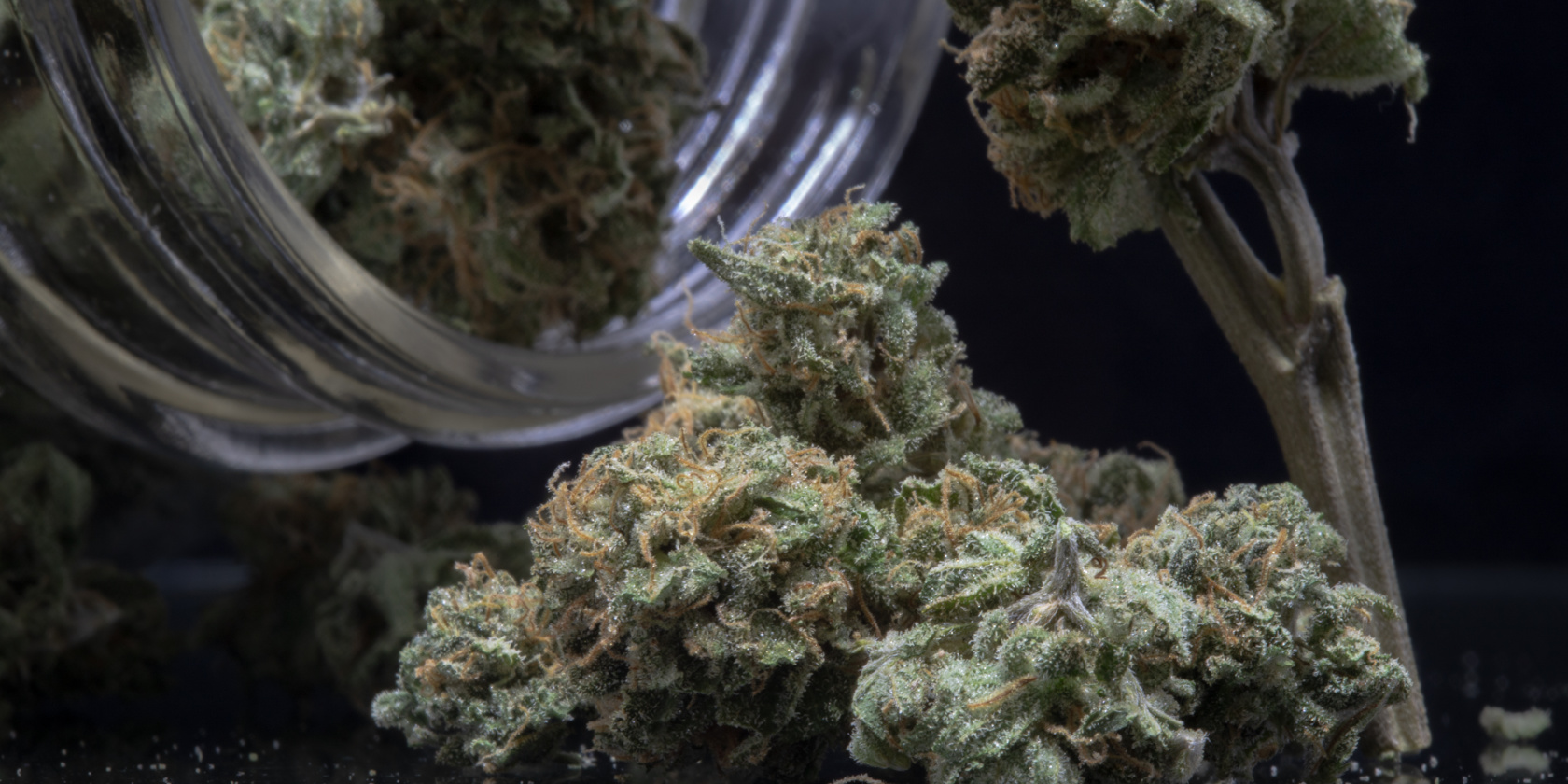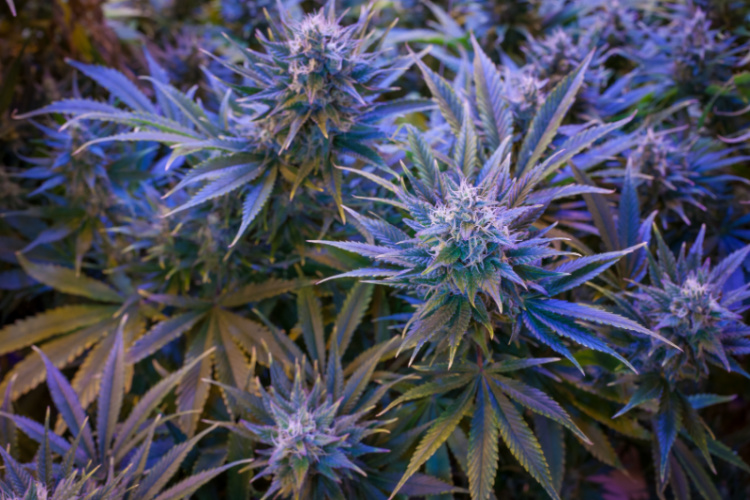Cooking with Cannabis: A Complete Guide
Have you ever wondered what cooking with cannabis would be like? Crafting your own infused delicacies and looking forward to that extra-rewarding first bite? Luckily, learning how to cook with cannabis isn’t extraordinarily difficult. In this post, we’re going to look at the basics of cannabis cooking and share two important recipes that will enable you to make many different cannabis-infused treats.
Cooking with Cannabis: The Basics
Cooking with cannabis is just like regular cooking. There’s just one difference: THC. While it would be great to just mash some cannabis flower into a brownie and call it a day, that’s unfortunately not an option.
That’s because cannabis flower doesn’t actually contain THC. Instead, the plant develops THCA. This chemical precursor turns into THC when exposed to heat through a process called decarboxylation. That usually happens when you spark up some flower for a puff. However, since there’s no flame involved with edibles, you’ll need a “decarb” workaround.
How to Decarboxylate Cannabis Flower
The term “decarboxylation” may look scary on paper. But its bark is worse than its bite.
All you need to do to decarb cannabis is heat-activate it. That’s a two-step process. First, grind your cannabis with an herb grinder. Then, put it on a cookie sheet covered in wax paper. Bake it at 245 Fahrenheit for about 30 minutes. Mix it every 10 minutes to make sure it cooks properly. When all your cannabis is a light golden brown, you’re ready to rock.
Cannabis Cooking: Two Important Recipes and Tips
Now that we have the basics of cannabis cooking under our belts, we can get down to the fun business: recipes. THC is a highly lipid-soluble molecule. In other words, it binds readily to fats. Butter and oil both contain tons of fats. These are the foundational ingredients for any cannabis-infused product.
Having a recipe on hand for both cannabutter and infused coconut oil will give you two solid options for a versatile cannabis ingredient with which to infuse recipes. Armed with cannabutter or cannaoil, you can start baking or cooking with cannabis using any normal recipe that calls for butter or oil.
Before you begin: Always label your infused products clearly, so no one accidentally uses a cannabis product. Keep out of the reach of children. Store cannabutter or canna oil in the fridge or freezer.
How to Cook with Cannabis: Cannabutter
Cannabutter is a classic medium for carrying THC. Countless recipes use normal butter, which you can substitute with cannabutter super easily. Here’s how to make it.
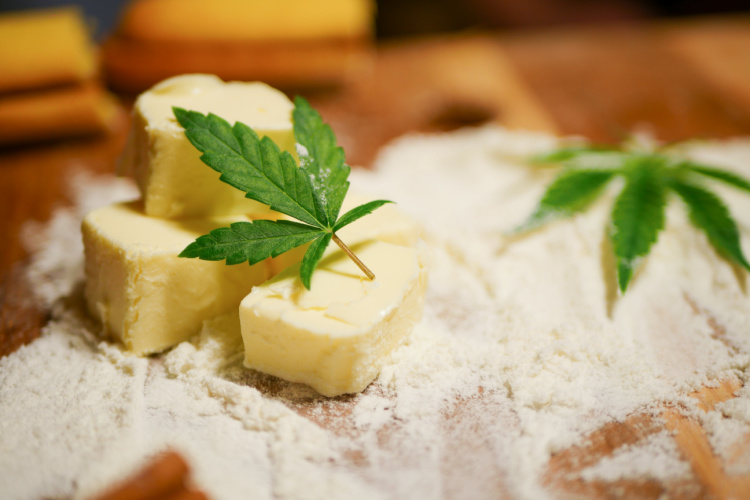
Ingredients:
- 7 grams decarboxylated flower
- 1 cup butter
- 1 cup water
Instructions for Making Cannabutter:
First, decarb your flower as outlined above. Once your flower is decarbed, you can begin the cannabutter-making process.
Combine butter and water in a saucepan on a low heat. Once the butter has begun melting, add your decarbed flower. Keep simmering at a low heat (about 170 Fahrenheit or so) for between 2 and 3 hours. Never let it boil fully!
Finally, let the butter cool slightly (but make sure it's still in liquid form) and strain the cannabutter into a jar through a cheesecloth. Refrigerate until solid, then seal with a lid. If any water separates during solidification, you can discard that excess water.
How to Cook with Cannabis: Infused Coconut Oil
Sometimes, you don’t want to cook with butter. In that case, coconut oil makes a great substitute that readily absorbs THC and tastes great. Check out this recipe.
Ingredients:
- 7 grams decarboxylated flower
- 1 cup coconut oil
Instructions:
Place both the coconut oil and the flower into a high heat-rated Mason jar or similar (Find out how to assess your jar for safety.) Place the jar into a pot. Fill the pot with enough water until the water line is above the oil/flower mixture. Important: Start with room temperature water (not cold, as that could cause the glass to break), bringing it to a boil slowly.
Both the jar and the pot should remain uncovered for ventilation. Keep on a medium boil for 2 hours, monitoring closely. Keep an eye on the water level, since some of it will boil off. Add more water, as needed, to maintain the original water level in the pot.
Lastly, let the oil cool slightly (it still needs to be in liquid form but you don’t want it steaming hot), then strain the canna oil into another jar through a cheesecloth. Once cool, seal with a lid.
Cooking with Cannabis: Wrapping Up
Now that you know how to cook with cannabis, you need to start working on your own recipes! First things first, though. You’re going to need to stock up on some flower of your own. That’s where we come in. Check out our full selection of flower or come visit our dispensary to get cooking. We look forward to serving you!
What Are Cannabis Edibles, How Long Do They Last?
If you’re returning to the world of cannabis after many years, you’ve probably noticed that much has changed. In addition to entirely new classes of products such as vaporizers, concentrates, and topicals, the world of cannabis-infused edibles has been turned into a confectionary powerhouse.
If you grew up thinking “cannabis edibles” meant inconsistent (and often dry) marijuana brownies, you’re in for a surprise: From infused honey to mouth watering chocolates to chewable lozenges and discreet capsules, there’s a wide and truly impressive variety of cannabis-infused edibles on the market. If you’re curious about edibles but haven’t known where to begin, you’re in the right place. This post will answer such important questions about ingestible cannabis, such as:
- What are cannabis edibles?
- How long does it take cannabis infused edibles to work?
- How long do cannabis edibles last?
- What’s the right dosage of cannabis edibles?
Are you ready? Let’s dive in.
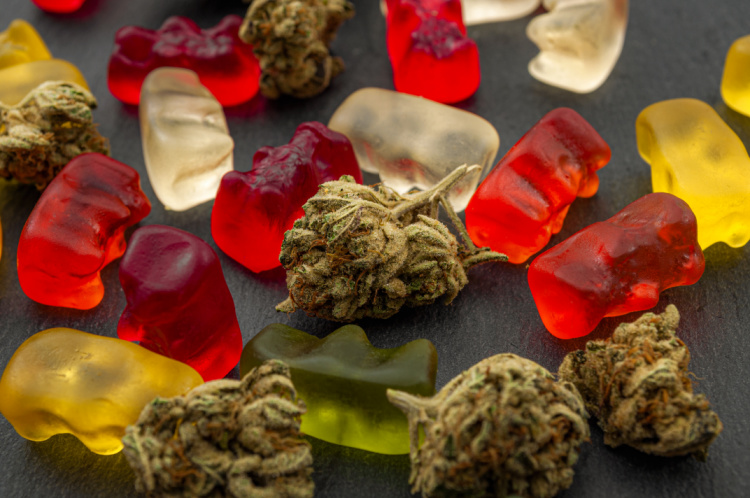 What are Cannabis Infused Edibles?
What are Cannabis Infused Edibles?
At the most basic level, a cannabis edible is a food or beverage infused with cannabis or its major active ingredients, natural compounds called cannabinoids. The two most prevalent cannabinoids are THC and CBD. THC is the cannabinoid most directly responsible for cannabis’ distinctive “high.” By comparison, CBD imparts—at most—a gentle cerebral “buzz.” That’s why CBD on its own is legal in all 50 states and the District of Columbia. In addition to their subjective effects, both THC and CBD deliver a wide range of medical potential, from reducing several types of pain to helping treat certain seizures to reducing anxiety and stress.
In part because cannabis itself can be processed into so many forms—from fresh, fragrant flower to the aforementioned concentrates and tinctures—there’s practically no limit to the number and types of foods and beverages that can be transformed into cannabis infused edibles. But while many of them take the form of familiar (and delicious!) infused chocolates, cereal treats, and other sweet snacks, others take a more straightforward approach.
A capsule may not seem the likeliest format in which to take cannabis, but that’s an increasingly preferred choice for many people. Especially popular with those new to cannabis medicine, capsules offer a portable, shelf-stable, and discreet way to access a consistent and precise dose of cannabis. Needless to say, this is especially useful when the goal is to address chronic symptoms and conditions such as pain, anxiety, and the side-effects of chemotherapy.
One of the most popular forms of cannabis infused edible is the lozenge or troche (pronounced “trow-kee”). Smaller and more shelf-stable than infused cookies or chocolate bars, they provide a carefully measured dose of cannabis medicine along with a burst of juicy flavor.
For all the variety and choices offered by cannabis edibles, though, it’s important to understand the ways they function in our bodies in comparison to inhaled cannabis. That’s a great excuse to dive into our next topics: “How long do cannabis edibles take to start working?” and “How long do cannabis edibles last?”
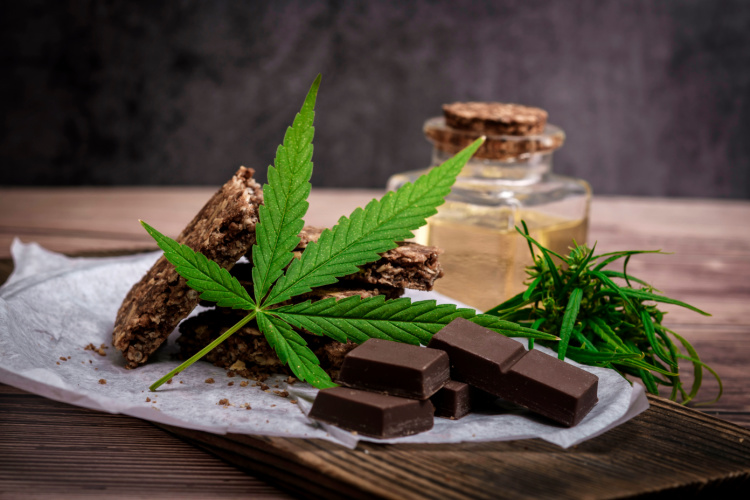 How Long Do Cannabis Edibles Take to Start Working?
How Long Do Cannabis Edibles Take to Start Working?
When we ingest cannabis by smoking it or inhaling it through a vaporizer, we feel its effects quickly, typically within about ten minutes. That’s because the cannabinoids are rapidly absorbed through the lungs.
With edibles, by comparison, the cannabinoids are processed by the liver. Among other things, this means that it takes much longer for the cannabis to take effect. Apart from such factors as an individual’s age, weight, metabolism, and recent food intake, you can typically expect an edible to take between 45 minutes and 2 hours to begin taking effect.
Perhaps the most common issue around cannabis edibles is that inexperienced users—believing the product simply “didn’t work”—will take more. But when the double dose of edibles finally kicks in, the effect can be much stronger than anticipated.
That is why we always counsel our clients to “start low, go slow.” Knowing that it may take up to 2 hours for an edible to take effect, you’ll be better prepared for a predictable, positive, and fruitful experience.
How Long Do Cannabis Edibles Last?
Just as cannabis infused edibles take longer to reach their full effect, they also last much longer in our bodies. Whereas you can expect the effects of smoked or vaped cannabis to last from around 1 to 3 hours, the effects of edibles often last from 5 to 8 hours—and in some cases, up to 24 hours.
That’s a wide range, and again, several factors influence its duration. As we mentioned earlier, THC is the cannabinoid most directly responsible for the cannabis plant’s distinctive “high.” If you’re concerned about excess psychoactivity, we recommend you try a cannabis edible with either a balanced THC:CBD ratio, or one that contains very little THC. Especially if you’re new to edibles, this is a good way to mitigate effects that might otherwise feel slightly overwhelming.
With that in mind, we’ll share some dosing guidelines.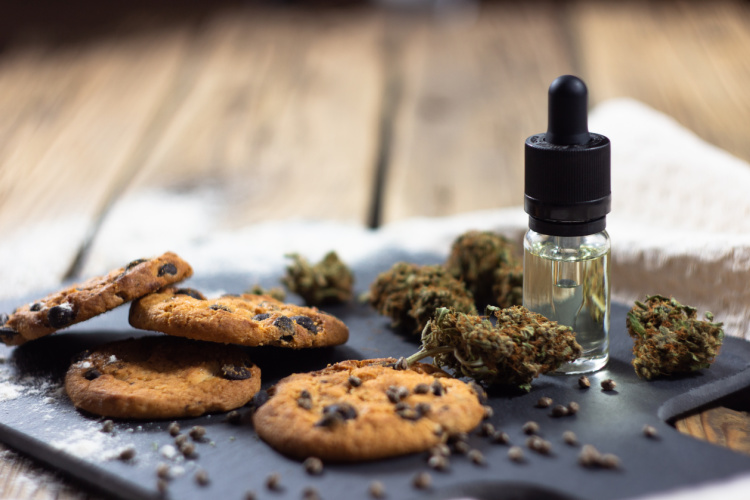
What’s the Right Dosage of Cannabis Edibles?
Every package of cannabis infused edibles we sell is labeled with the precise dosage of THC in each individual unit, denoted in milligrams (mg). Here’s what you can expect in terms of subjective effects.
THC Dosage of 1 mg to 2.5 mg
Expected Effects: Mild relief of symptoms including pain, stress, and anxiety; heightened focus and creativity.
Recommended for: First-time consumers, or more experienced consumers looking to microdose cannabis.
THC Dosage of 2.5 mg to 15 mg
Expected Effects: Stronger symptomatic relief; euphoria; slightly impaired coordination and perception.
Recommended for: Stubborn symptoms not affected by smaller doses; treatment for insomnia.
THC Dosage of 30 mg to 50 mg
Expected Effects: Strong euphoria; significantly impaired coordination and perception.
Recommended for: Those consumers with a high tolerance for THC, or those whose GI systems don’t tend to absorb cannabinoids effectively.
THC Dosage of 50 mg to 100 mg
Expected Effects: Seriously impaired coordination and perception; possible unpleasant side effects including nausea and increased heart rate.
Recommended for: Experienced, high-tolerance THC consumers; patients living with inflammatory disorders, cancer, and other serious conditions.
Cannabis Infused Edibles: Other Considerations
These guidelines provide a useful starting point, but because everyone’s individual physiology is unique, you may respond a bit differently. Again, that’s why we urge you to “start slow, go low.” Begin with a low dose, and remember to wait at least 2 hours before taking any more.
If at any point the effects of cannabis feel too strong, don’t panic. Though the sensations—which could include nausea, paranoia, or a racing heart rate—may feel unpleasant, they’re rarely dangerous. Try watching a show, snuggling with your animal, or stepping outside for some fresh air and to take a gander at a nearby tree. That said: If you suffer from pre-existing heart conditions or other serious medical issues, please consult with a cannabis-informed physician before trying infused edibles.
What Are Cannabis Edibles: Wrapping Up
As the District’s first and longest-running medical cannabis dispensary, we’re grateful that so many Washingtonians turn to Takoma Wellness Center. Check out our edibles via our online menu or stop by. If you have any further questions about cannabis edibles, don’t hesitate to reach out. We’re here to help!
Ask a DC Budtender: How to Take Edibles
New cannabis consumers often approach edibles with a mixture of excitement, fear, and caution. We get it: Edibles have a questionable reputation. But they shouldn’t. Our basics will help you have the best experience, every time.
When it comes to cannabis-infused edibles, there’s an element of mystery that can make taking the first bite of that infused chocolate bar (or oat bar, marshmallow crisp, or cookie in a jar) a nerve-wracking experience. How do you know the correct dosage? And what effects will you experience?
Unlike more familiar forms of cannabis, such as flower and vape cartridges, it’s hard to make a visual assessment of the perfect amount (and variety) of cannabis edibles to suit your needs.
That’s why we decided to sit down with our favorite professional Patient Consultants from the best dispensary in Washington DC to learn the ins and outs of cannabis edibles, how to take edibles, and how new consumers can ensure a perfect experience every time.
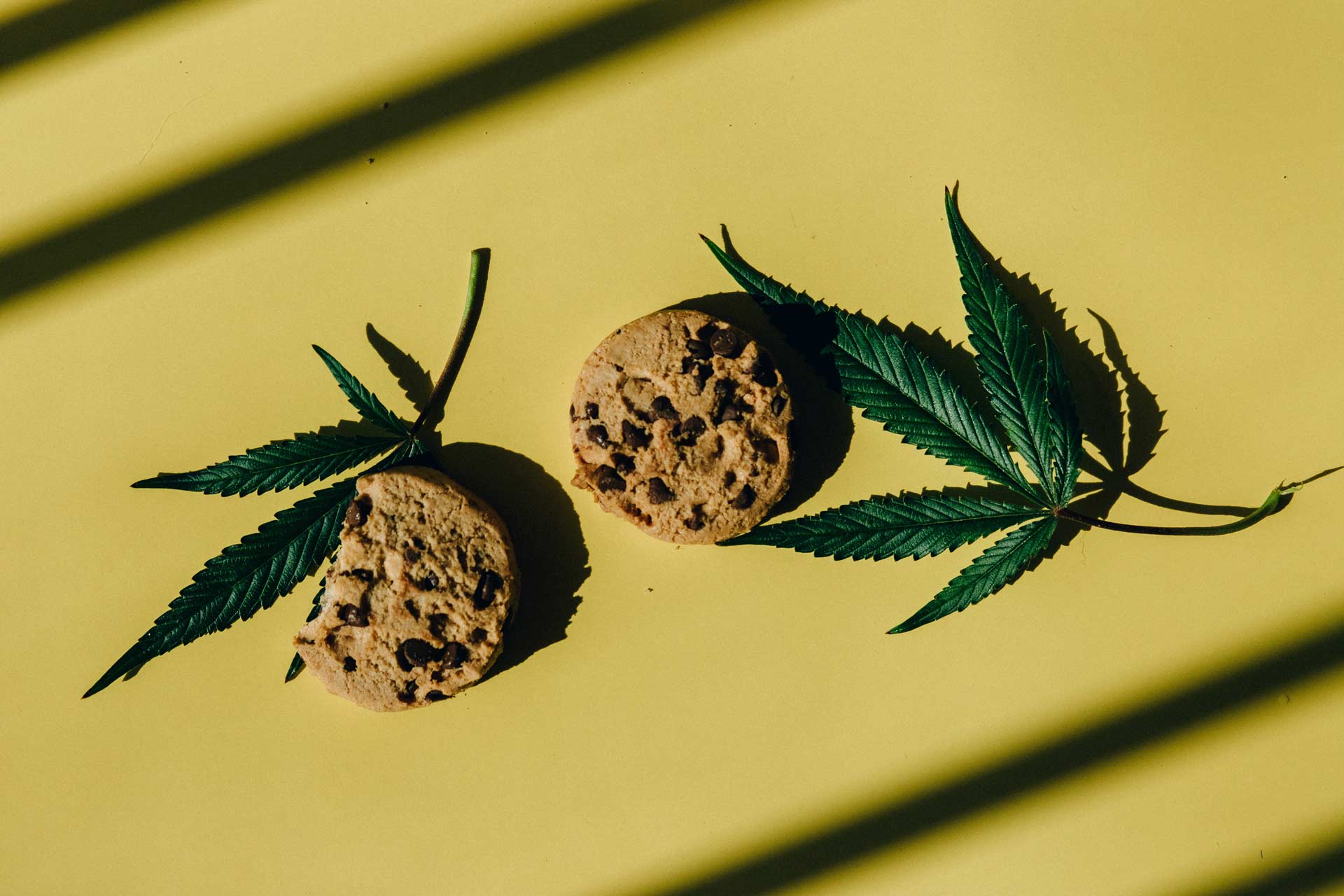
What are cannabis edibles?
Let’s start with the basics. What are cannabis edibles and how do they work?
Put simply, it is any cannabis-infused food product that contains either THC or CBD. Enthusiasts prefer an edible consumption method for many reasons: convenience, circumventing possible impact of smoking on their lungs, delayed effects, and more.
These days, cannabis-infused edibles come in many forms beyond the familiar pot brownie—from beef jerky to breakfast cereal! With the world of cannabis edible brands expanding by the day, it’s easy to find a product to suit your palette (and dosage and effects requirements).
Types of Cannabis Edibles at Dispensaries
Nowadays, you may come across many different types of edibles at dispensaries. Edibles can differ in both their form and their contents, resulting in potential changes to how long their effects can take to kick in and what kinds of effects you may experience when ingesting them.
For example, you may opt to go with a candy or mint that may get absorbed sublingually and kick in faster, or a baked goodie such as a cookie or a brownie that is processed through your stomach, then liver, thus kicking in only after some time has passed (usually, 30 minutes to 2 hours). It’s important to be mindful of the kinds of cannabinoids and cannabinoid ratios that each type of edible contains. This will be detailed on the packaging.
An edible containing solely THC can be expected to produce the typical psychoactive and mind-altering effects that are usually associated with cannabis. The type of THC strain used to make the edible will indicate which types of psychoactive effects are most likely. As a general guide: sativa tends to produce more active, energizing uplifting effects and indica usually will lean more mellow, spacy, and chill. A high-CBD edible will produce some physiological effects, but not psychoactive ones.
Different ratios of these two cannabinoids can result in vastly different edible experiences. Thanks to the entourage effect, consuming THC and CBD together will produce effects that are different than if either one was to be ingested on its own.
Exactly what kinds of effects you can expect from a mixed edible will depend on its exact cannabinoid ratio. A 1:1 THC to CBD ratio indicates a blend of mild euphoria and calm relaxation. The more CBD in the ratio, the less euphoria and psychoactive effects. For example, a 1:10 THC to CBD ratio may mean that there’s no (or very little) noticeable euphoria or ‘high’ whatsoever, making it preferable for therapeutic dosing.
Pay close attention to the label of your edibles to see what their cannabinoid ratio is, and think carefully about what kinds of effects you want to experience from them. Whether you’re looking for a fun and euphoric buzz, or a calm and therapeutic one, you’ll be sure to find it among the many types of edibles at dispensaries. You just need to make sure you choose the right one.
How long does it take cannabis edibles to kick in?
Cannabis-infused edibles tend to take longer to kick in than inhalable cannabis products.
Typically, you can expect to wait between 30-60 minutes to experience the effects of cannabis edibles, though it may take 2-3 hours, depending on your physiology and tolerance. Many such factors can affect the timing of cannabis absorption via edibles. Let’s go over a few:
- You might feel the effects of high dosage THC edibles more quickly than a lower dose product.
- Edibles you consume by sucking on them (such as lozenges, lollipops, and gum) tend to kick in faster since some of the cannabinoids are absorbed directly through your saliva sublingually.
- Chewable edibles (such as gummies, cookies, or oat bars) take longer to kick in since they have to be digested before your body absorbs the THC or CBD they contain.
- Other factors, such as how empty your stomach is and your sex, weight, and cannabis tolerance, can affect how quickly your body reacts to edibles, as well.
If you’ve consumed an edible and don’t yet feel the effects, have patience! Our Budtenders recommend waiting 24 hours before dosing again to avoid consuming too much. Instead, try eating a bit of food to kick-start your digestion.
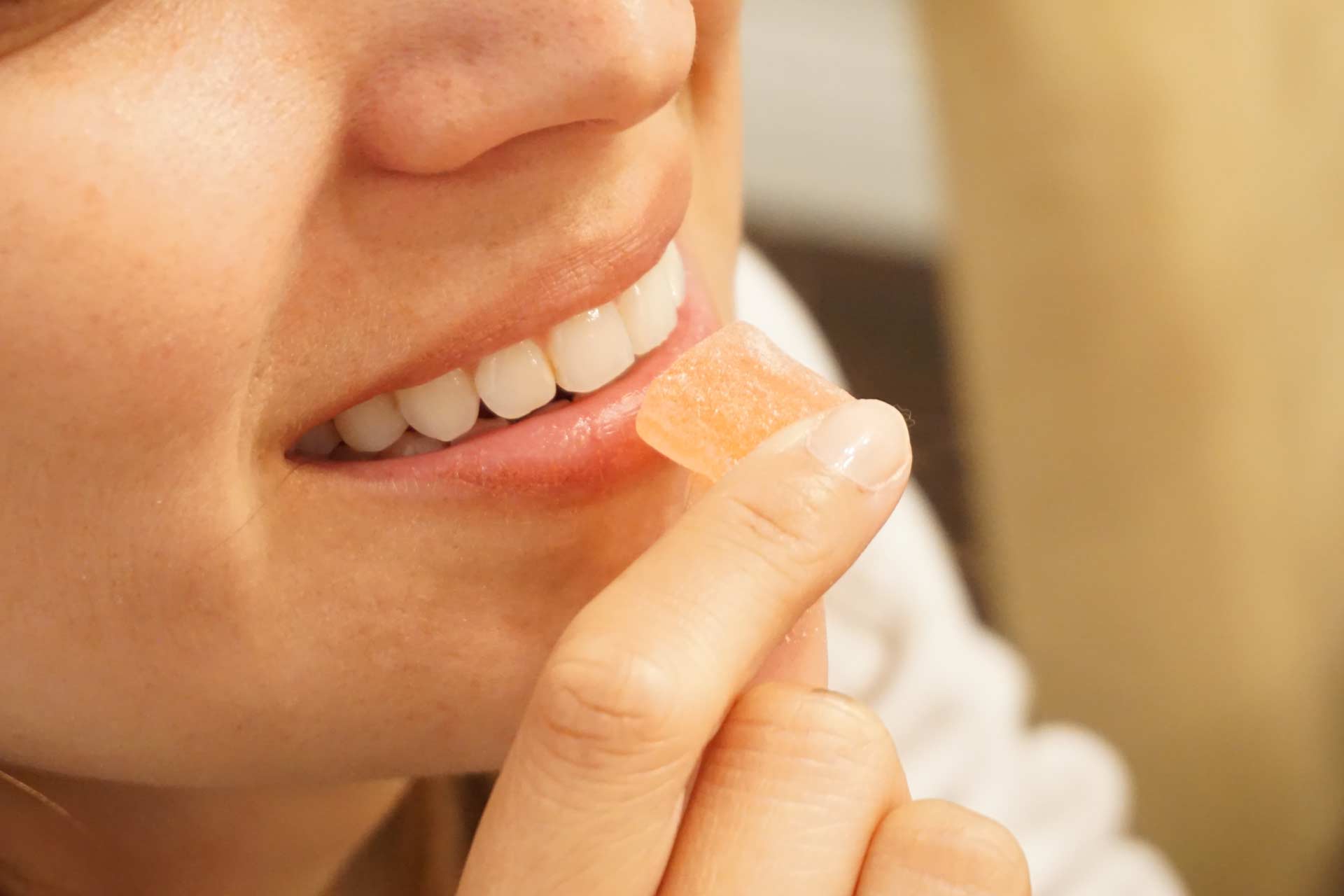
How do edibles make you feel?
One advantage of edibles is the intensity they offer compared to other cannabis products. Cannabis-infused edibles create a more powerful high than some other consumption methods, and you’ll feel the effects longer than inhalable cannabis products. Because an edible is slowly digested by the stomach, an edible high can last for as long as 6–8 hours.
Exactly how an edible will make you feel will largely depend on the strain of cannabis that you’re ingesting. As we mentioned, a strong indica strain often helps you feel relaxed and even sleepy, while a potent sativa will feel much more stimulating and energizing. In general, you should expect a strong body buzz when ingesting cannabis-infused edibles, especially if you’re ingesting an indica strain.
How to Take Edibles: Dosing Your Edible
Getting your dosage right is really important when you’re considering how to take edibles. If you’re planning on trying a THC edible, you should always try to stick to a dosage that you’re sure you can handle.
Ingesting too much THC is a common mistake that people make when enjoying edibles and, while it won’t endanger your health, it can lead to an overly strong buzz that may feel overpowering and may expose you to THC’s side effects like anxiety and paranoia.
That’s why it’s best to start low and go slow with your THC edibles. Try a low dosage that you’re sure you’ll be comfortable with. If you find that’s not enough, go ahead and move up to a larger dosage next time. Just don’t try to ingest more until you’re sure the buzz of your first one has peaked or you may end up taking too much.
How to Take Edibles: Wrapping Up
Looking for the best dispensary in Washington DC for cannabis-infused edibles? Come down to Takoma Wellness today or browse our online menu from home to shop a huge variety of delicious cannabis edibles that you’re sure to love!
Have a question about how to take edibles that we haven’t answered? Don’t be afraid to ask us. We’ll be sure to help you however we can. Taking a mindful approach to cannabis edible consumption will ensure you have a blissful, relaxing experience that’s DC Budtender approved. We look forward to seeing you!
Hash History: A Study of Top Marijuana Strains at Takoma Wellness
There are history buffs in nearly every topic of interest—and one topic that’s been drawing a lot of attention recently is cannabis history. Cannabis buffs look at the study of marijuana strains and their origins in the same way other amateur historians look at airplanes or boats. If you’re one of these people, rejoice! We’re going to take a deep dive on the history of three top marijuana strains in this post.
Let’s Study Marijuana: Top Strains at Takoma Wellness Center and Their Origins
While we were tempted to only look at old-school strains, we decided against it: That would be like only covering ancient history. We’ve put together a survey of classic and more modern genetics for this history lesson. Check out our breakdown of Blue Dream, OG Kush, and Do-Si-Do below.
Blue Dream
We’re going to kick things off with one of the biggest strains of all time: Blue Dream. This sativa-dominant strain was all the rage in the late 2000s and early 2010s. But its story starts before that.
Blue Dream traces its origins to California in 2003. It was created by crossing the legendary cannabis breeder DJ Short’s Blueberry strain with the equally renowned strain Super Silver Haze. While no one’s sure exactly who bred the first Blue Dream plant, some believe it originated in the Santa Cruz area.
Like its parent Blueberry, Blue Dream has a sweet, juicy flavor. One of the things that cannabis lovers found so attractive about Blue Dream was its euphoric and cerebral effects. That makes it a great daytime strain, in contrast to couch-locking indicas. Blue Dream often features a THC content that hovers around 20%, and it has little CBD to speak of.
Check out our menu to experience Blue Dream for yourself.
Classic OG Kush
If someone asked you to think of the biggest strains of all time, chances are OG Kush is one of the names you’d come up with. OG Kush is a hybrid that offers both relaxing and uplifting effects. It usually has a fairly high THC content, regularly clocking in above 20 percent.
And who could forget the flavor and aroma? OG Kush seamlessly blends the spicy incense-like fragrance of Kush plants with the distinctive scent of dirt that typifies OG strains. Sparking it up is often reminiscent of walking through freshly plowed earth.
OG Kush’s real genetics are shrouded in mystery. Despite its seemingly obvious nod to rap, we don’t even know what “OG” really stands for! Some insist it means “Original Gangster.” Still others point to the term “Ocean Grown” in a reference to coastal California. However, experts generally accept that Chemdawg is involved, and crossed with either a Thai or Hindu Kush plant.
Want to learn more? Find Classic OG Kush at our dispensary.
Do-Si-Do
So far, we’ve really only looked at old-school strains in our deep dive into the origins of top marijuana strains. But we’re going to change that and spark up something a little more modern: Do-Si-Do.
If you’re familiar with modern cannabis genetics, you’ve probably heard of Do-Si-Do. It’s a cross between Girl Scout Cookies and Face Off OG. First hitting the scene in 2016, this strain quickly grew in popularity and was named Leafly’s “Strain of the Year” for 2021.
What really makes Do-Si-Do stand out is its high THC concentration. It often reaches a percentage in the high 20% range, sometimes even surpassing 30%. Its flavor hits you in the face, too, and definitely has notes of that classic OG taste we mentioned earlier.
Do-Si-Do is the kind of strain you need to try to believe, and with a strain this high in THC we always recommend the old adage for consumption: start low and go slow. You can browse the Do-Si-Do products we have in stock on our online menu.
The History of Marijuana Strains from Takoma Wellness Center
Hopefully you’ve enjoyed our cursory study of some classic marijuana strains. If you’re looking for other legendary genetics, check out our complete menu!
Questions? Comments? Please reach out, we’re happy to help. We look forward to serving you!
Zurple Punch Weed Strain: A Complete Guide
Are you the kind of cannabis enthusiast who’s always searching for the next hot strain? If you are, look no further than Zurple Punch. Zurple Punch is a cannabis strain that will soon carve a name for itself in the annals of the weed world. With great flavor and pleasant middle-of-the-road effects you’re not going to want to sleep on it.
Marijuana Reviews: Zurple Punch Weed Strain
Zurple Punch is a fairly rare cannabis strain. It’s also fairly new, which may contribute to that—some people just haven’t caught on yet. That gives savvy cannabis lovers the opportunity to get in on the ground floor with this impressive strain. If you’re the kind of person who chases rare genetics, the strain is not to be missed.
Zurple Punch: Genetics and Effects
This strain’s unique name comes from its parents. Zurple Punch is a cross of Zkittles (a hugely popular strain over the last few years) with Purple Punch (an older, but still popular strain). That lineage gives Zurple Punch a fairly balanced hybrid genetic profile.
That genetic profile plays a large role in determining the effects of this strain. Users report that it helps to spark creativity and sociability. It also may heighten the sensitivity of certain senses. Additionally, some fans of the strain say that it helps them relax and chill out.
Zurple Punch often tests between 20% and 23% THC, putting it in the “middle of the road” category of weed strains. It’s not so strong that it’s overwhelming for those new to cannabis, but its effects are powerful enough to please even the most experienced cannabis enthusiast.
THC isn’t the only thing that determines the effects of Zurple Punch, though. It also contains nearly 1% CBD. While that may not sound like much, many strains contain even less CBD. That means Zurple Punch actually has a decent amount of CBD.
Terpene Profile: Flavor and Aroma
It has a unique flavor and fragrance that cannabis connoisseurs won’t find in many other strains. It combines notes of blue cheese and sweet berries with some distinctively nutty tones. Additionally, a faint lavender fragrance permeates this strain.
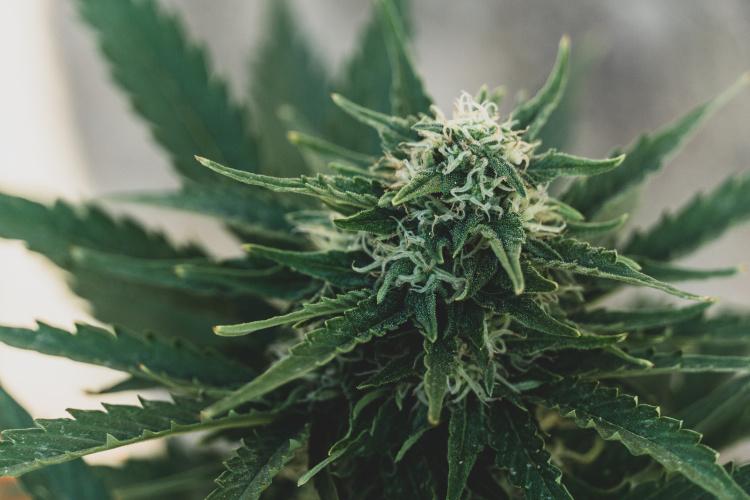
You can thank its terpene profile for that. Terpenoline influences Zurple Punch’s fragrance and tastes the most with its floral funk, along with some help from:
- Caryophyllene: Caryophyllene is the only terpene that’s also a cannabinoid, which puts it in a unique position. It has a sharp, spicy taste, and you can find it commonly in black pepper. According to some research, it may be effective at reducing swelling.
- Pinene: The most common terpene in nature, Pinene, has a fresh and uplifting scent that you may associate with evergreen trees.
- Limonene: Limonene contains the very essence of citrus flavor. You can find this zesty, upbeat terpene n in (you guessed it) citrus plants and their fruits. Some research suggests this terpene may have anti-inflammatory, anti-oxidant, and gastroprotective properties, among others.
Zurple Punch Strain Takeaways
All in all, this is a strain on the precipice of greatness and certainly a strain worth seeking out. Stop by Takoma Wellness Center, call or browse our online menu to see what products we’re currently carrying.
Questions? Comments? Please feel free to reach out: We’re always here to help. And we look forward to serving you!



